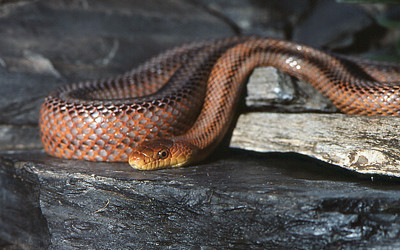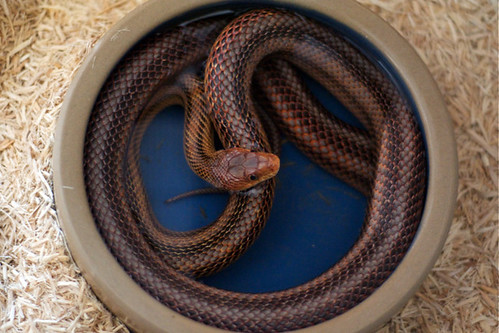Elaphe bairdi is a harmless colubrid species found in the United States in the Big Bend region of western Texas, as well as in northern Mexico in Coahuila, Nuevo León, and Tamaulipas. The species was named in honor of the American zoologist Spencer Fullerton Baird. No subspecies are currently recognized.
Adults can reach 25 to 55 inches in length. The color pattern consists of an orange-yellow to bright yellow, or a darker salmon ground color, overlaid with four stripes that run from the neck to the tail. The belly is generally gray to yellow, darkening near the tail.
The primary diet consists of rodents, although they will also prey on birds. Juveniles often eat lizards. They are typically more pleasantly tempered than other rat snake species. They are oviparous, laying a clutch of up to 10 eggs that takes about 3 months to hatch. Prefers semi-arid, rocky habitats.
Common names
Baird's rat snake, Baird's ratsnake, Baird's pilot snake, Baird's Coluber, Great Bend rat snake.
The primary diet consists of rodents, although they will also prey on birds. Juveniles often eat lizards. They are typically more pleasantly tempered than other rat snake species. They are oviparous, laying a clutch of up to 10 eggs that takes about 3 months to hatch. Prefers semi-arid, rocky habitats.
Common names
Baird's rat snake, Baird's ratsnake, Baird's pilot snake, Baird's Coluber, Great Bend rat snake.



No comments:
Post a Comment